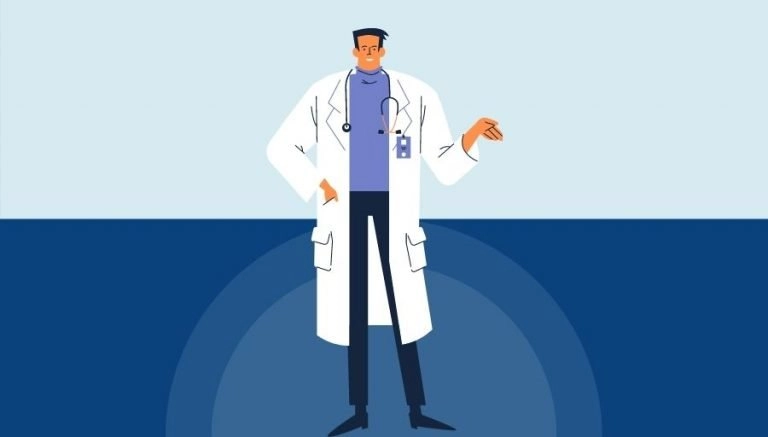How To Use CPT Code 43825
CPT 43825 describes a surgical procedure that involves the construction of an anastomosis between the stomach and the jejunum, along with a vagotomy. This article will provide an overview of CPT code 43825, including its official description, the procedure itself, qualifying circumstances, appropriate usage, documentation requirements, billing guidelines, historical information, and examples.
1. What is CPT Code 43825?
CPT 43825 is a code used to describe a surgical procedure in which a connection is created between the stomach and the jejunum, accompanied by a vagotomy. This procedure is commonly performed in cases of uncomplicated duodenal ulcer, in conjunction with a vagotomy, to effectively treat the condition.
2. Official Description
The official description of CPT code 43825 is: ‘Gastrojejunostomy; with vagotomy, any type.’
3. Procedure
- The surgeon begins by making a midline incision from the xiphoid to the belly button, providing access to the stomach and jejunum.
- A self-retaining retractor is used to hold the incision open and expose the stomach and jejunum.
- The transverse mesocolon, which covers the colon, is split vertically through an avascular area to enter the lesser sac.
- The posterior wall of the stomach is drawn out through the split in the mesocolon, and Allis tissue forceps are applied to the fold.
- Occlusion clamps are used to prevent bleeding or secretions from disturbing the anastomosis.
- The surgeon locates the duodenojejunal flexure, which is where the first loop of the jejunum is situated, just below the tail of the pancreas.
- The first loop of the jejunum is placed beside the posterior wall of the stomach, with the proximal part near the lesser curvature and the distal part near the greater curvature.
- The surgeon sutures the loop of jejunum to the stomach using nonabsorbable sutures.
- The main trunks or branches of the vagus nerve are exposed, depending on the type of vagotomy chosen.
- The hepatic and celiac branches of the vagus nerve are protected, and the surgeon ligates and divides either the main trunks or smaller branches close to the esophagus and various parts of the stomach.
- After completing the procedure, the surgeon controls any bleeding, irrigates the abdomen, removes packs, and closes the incision in layers.
4. Qualifying circumstances
CPT 43825 is performed on patients with uncomplicated duodenal ulcers who require a gastrojejunostomy and a vagotomy. The procedure is typically carried out by a surgeon and may involve different types of vagotomy, depending on the specific case. It is important to note that this code is used for cases where a vagotomy is performed in conjunction with the gastrojejunostomy.
5. When to use CPT code 43825
CPT code 43825 should be used when a surgeon performs a gastrojejunostomy procedure along with a vagotomy. It is important to ensure that the procedure meets the specific criteria outlined in the code description. If the procedure does not involve a vagotomy, a different CPT code should be used.
6. Documentation requirements
When documenting a claim for CPT code 43825, the surgeon must include the following information:
- Patient’s diagnosis, indicating the need for a gastrojejunostomy with vagotomy
- Details of the procedure, including the specific type of vagotomy performed
- Date of the surgery
- Any additional relevant information or complications encountered during the procedure
- Signature of the performing surgeon
7. Billing guidelines
When billing for CPT code 43825, it is crucial to ensure that the procedure meets the specific criteria outlined in the code description. Additionally, it is important to follow any specific billing guidelines provided by the payer. It is also essential to consider any applicable modifiers or additional codes that may be required to accurately report the procedure.
8. Historical information
CPT code 43825 was added to the Current Procedural Terminology system on January 1, 1990. The code has undergone no updates since its addition. However, it is worth noting that Medicare made a change in 2017, adding this procedure to the Inpatient Only (IPO) list.
9. Examples
- A surgeon performs a gastrojejunostomy with a vagotomy on a patient with an uncomplicated duodenal ulcer.
- A patient with a duodenal ulcer undergoes a gastrojejunostomy procedure with a vagotomy to alleviate their symptoms.
- A surgeon performs a gastrojejunostomy with a vagotomy on a patient with a history of recurrent duodenal ulcers.
- A gastroenterologist performs a gastrojejunostomy with a vagotomy on a patient with a complicated duodenal ulcer.
- A patient with a duodenal ulcer undergoes a gastrojejunostomy procedure with a vagotomy to prevent further complications.
- A surgeon performs a gastrojejunostomy with a vagotomy on a patient with a large duodenal ulcer that has not responded to conservative treatment.
- A patient with a duodenal ulcer undergoes a gastrojejunostomy procedure with a vagotomy to improve their quality of life.
- A surgeon performs a gastrojejunostomy with a vagotomy on a patient with a history of bleeding duodenal ulcers.
- A patient with a duodenal ulcer undergoes a gastrojejunostomy procedure with a vagotomy to reduce the risk of recurrence.



